Damien Hirst’s ‘almost tacky’ Cherry Blossoms bloom in Japan
After being exhibited at Paris’ Fondation Cartier, Damien Hirst’s vibrant, explosive cherry blossoms have taken on new life at The National Art Center, Tokyo, just in time for cherry blossom season
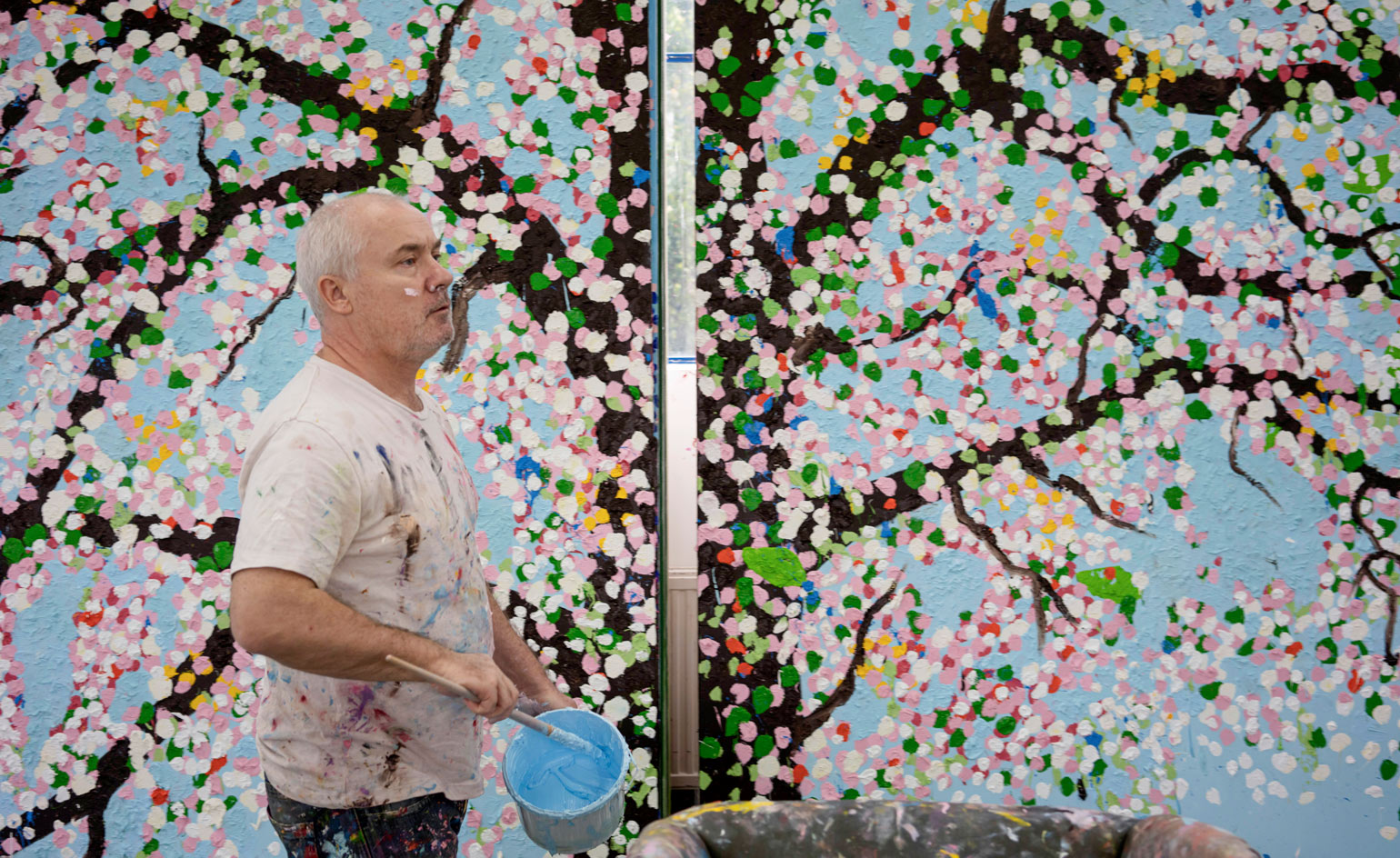
‘The Cherry Blossoms are about beauty and life and death. They’re extreme – there’s something almost tacky about them,’ says Damien Hirst, describing the series of paintings created for his first museum exhibition in France, devoted to, you guessed it, cherry blossoms.
The show began with an invitation from Hervé Chandès, general director of the Fondation Cartier, during a 2019 meeting with the artist in London. Over the following three years, Hirst lived and breathed Cherry Blossoms. In his Thames-side London studio, the artist describes ‘diving into the paintings and completely blitzing them from one end to the other’. Just in time for cherry blossom season, the show has now moved to The National Art Center, Tokyo marking the artist’s first major solo exhibition in Japan, which runs 23 May 2022.
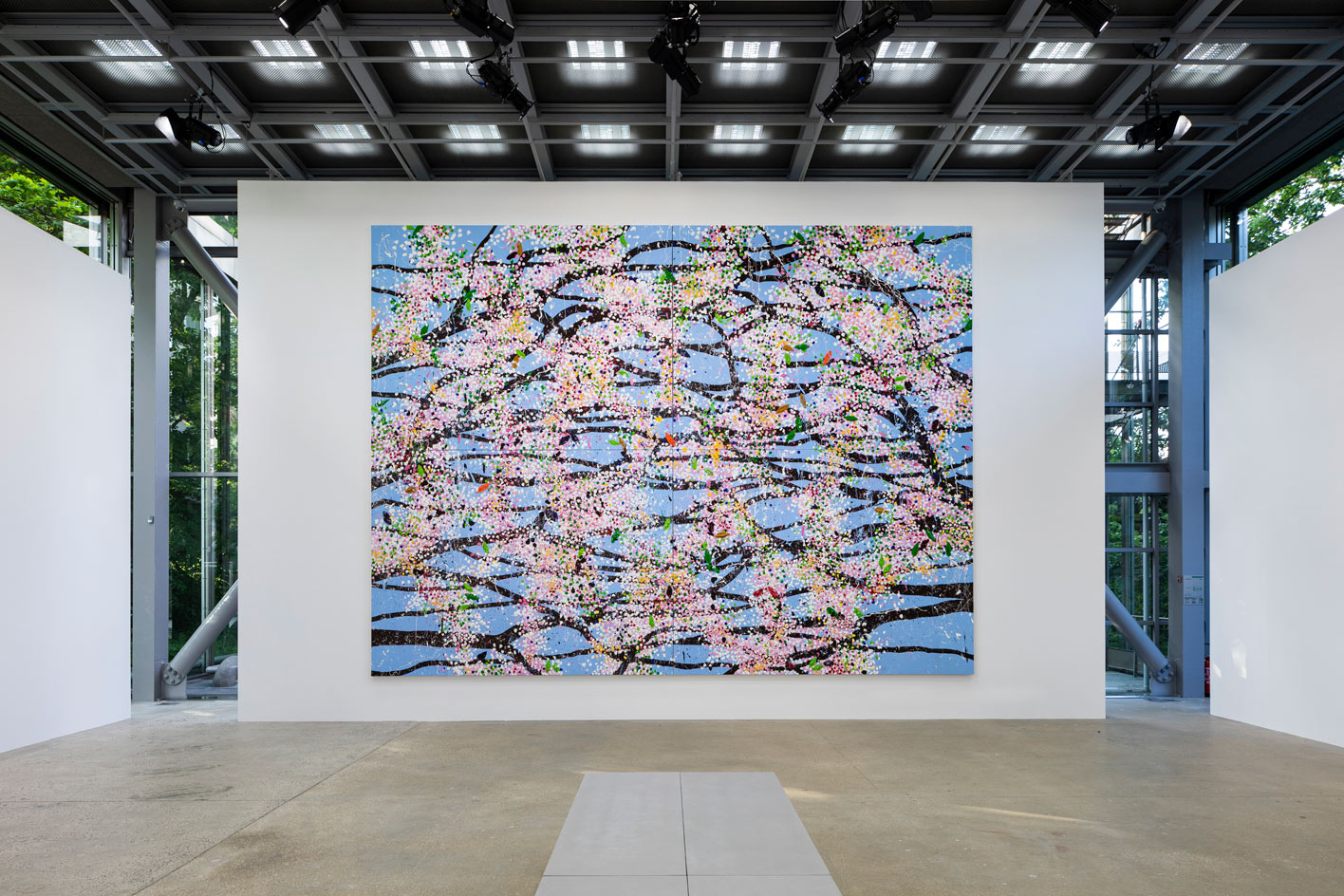
Exhibition view, Damien Hirst, ’Cherry Blossoms’, Fondation Cartier pour l’art contemporain, Paris.
Hirst dominated the Jean Nouvel-designed Fondation Cartier exhibition space with 30 paintings selected by Chandès and the artist. These vast canvases, divided into single panels, diptychs, triptychs, quadriptychs, and even a hexaptych, are saturated with vivid colours, and dizzying clusters of erupting buds that attract viewers, but also consume them.
The celebration of the blooming of cherry trees (or ‘sakura’) in Japan is centuries-old – a deeply-rooted cultural and philosophical symbol. Set against a clear blue sky, they are a vision of ultimate beauty, a phenomenon in their physical magnificence, their ephemerality, and also in their almost-parodic ability to tempt anyone with a camera and an Instagram account to stop in their tracks.
‘They’re decorative but taken from nature,’ says Hirst. ‘They’re about desire and how we process the things around us and what we turn them into, but also about the insane visual transience of beauty – a tree in full crazy blossom against a clear sky. It’s been so good to make them, to be completely lost in colour and in paint in my studio.’
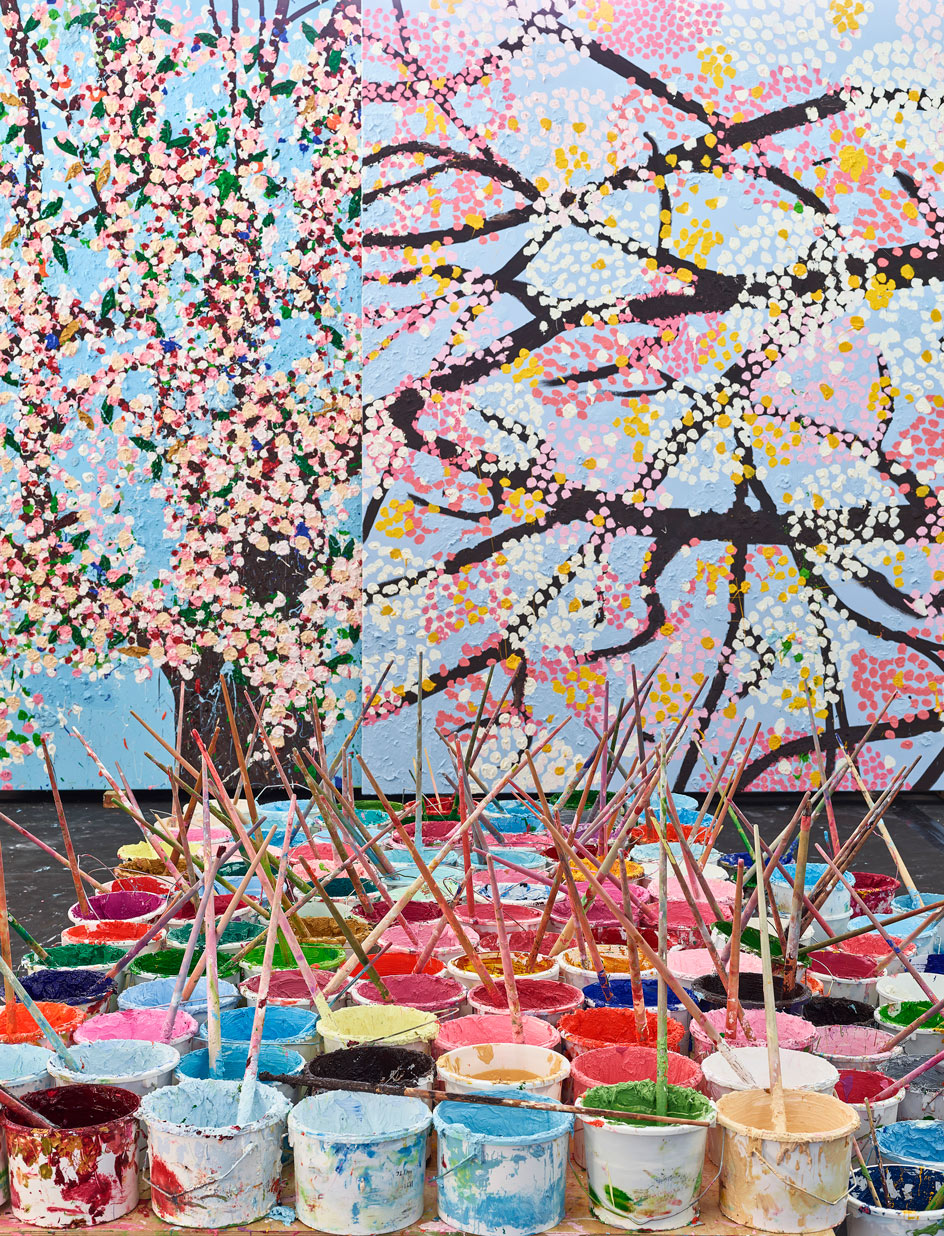
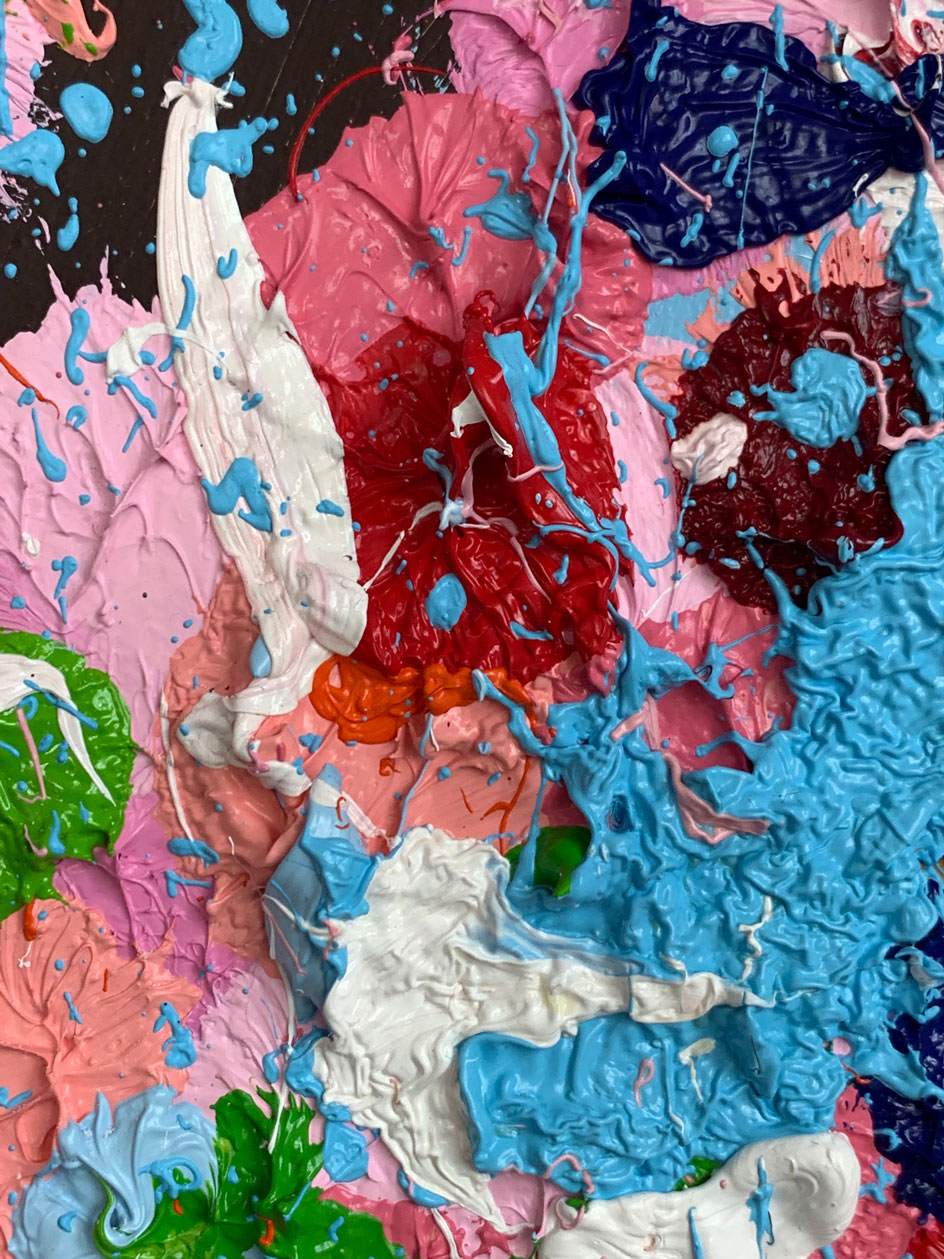
Top: View from Damien Hirst’s studio. Above: Cherry Blossom (detail), 2019. Both © Damien Hirst and Science Ltd. All rights reserved, DACS 2021
Damien Hirst: from formaldehyde sharks to Cherry Blossoms
At first glance, Cherry Blossoms feels like quite a shift for an artist once dubbed British art’s enfant terrible – the Turner Prize-winning Young British Artist (YBA) was just as well known for the sharks he pickled as the jaws he dropped. But this series is different: it’s beautiful, explosive, garish, yet conceptually shocking in its lack of shock factor.
But these works are consistent with Hirst’s insatiable appetite for experimentation and with his long-term devotion to painting. ‘I’ve had a romance with painting all my life, even if I avoided it. As a young artist, you react to the context, your situation. In the 1980s, painting wasn’t really the way to go,’ he says. Within the thickly applied brushstrokes is a meeting of modes and movements: the traditional constructs of landscape painting; the gestures of Impressionism and Pointillism, and the physicality of Action Painting; the immediacy of representation, and the zest of abstraction.
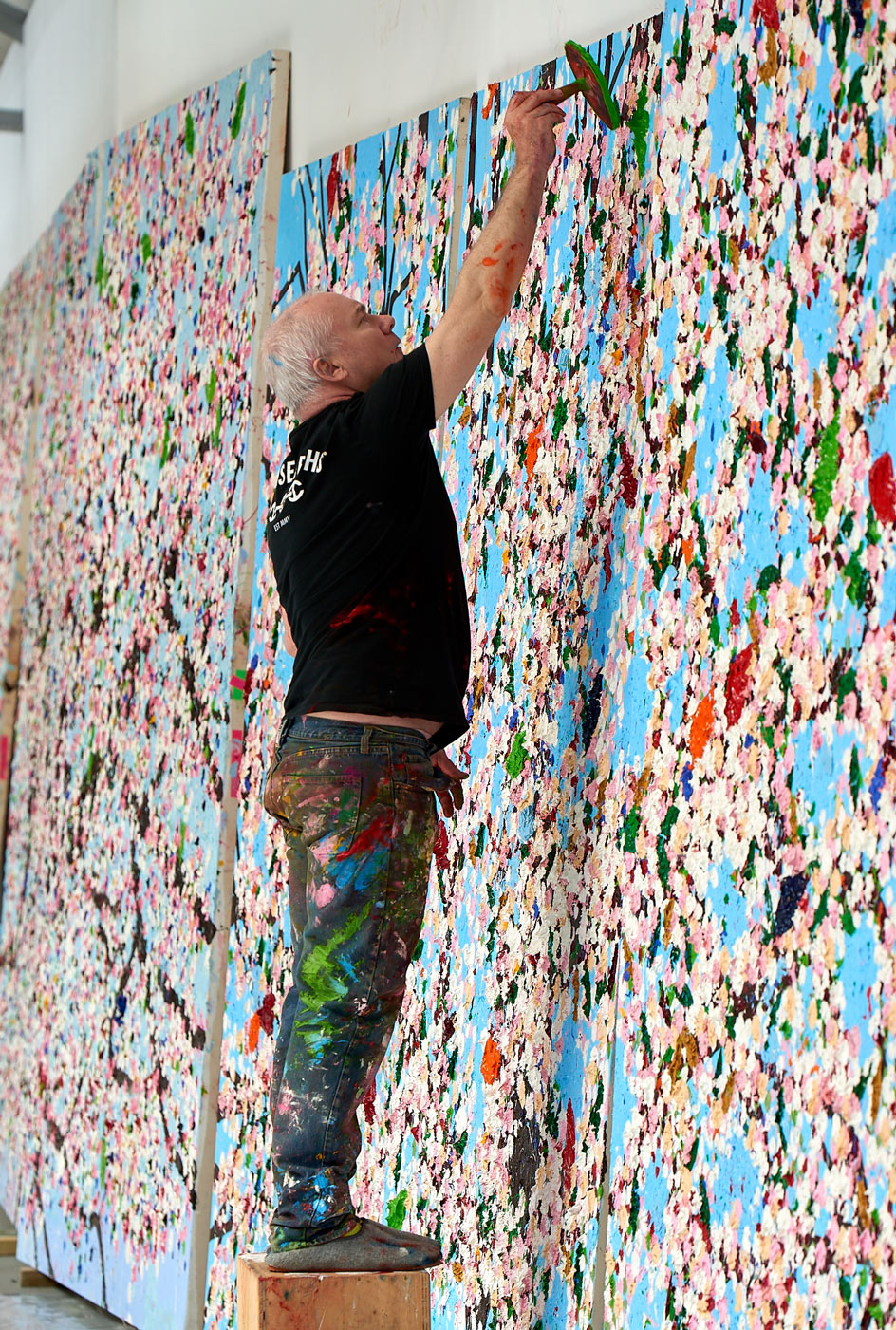
In 1986 he began a series known as Spot Paintings, where coloured dots, which appear to have been painted by a machine, are devoid of all traces of human intervention. Similarly, his famed Spin Paintings are created by pouring gloss paint onto a mechanically rotating canvas.
The Cherry Blossoms feel human, as though Hirst is introducing us to a new concept, and himself. ‘They’re garish and messy and fragile and about me moving away from minimalism and the idea of an imaginary mechanical painter and that’s so exciting for me.’
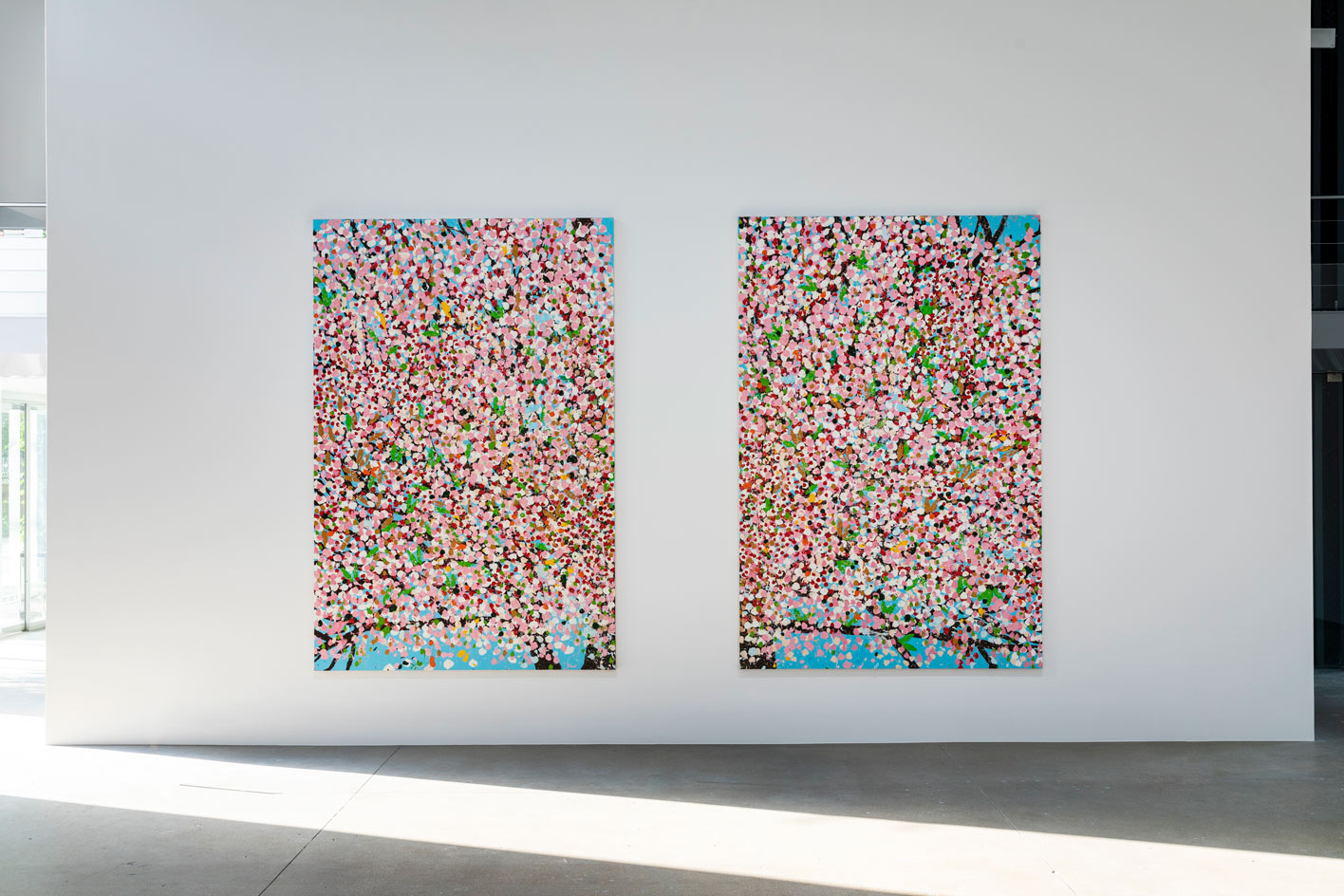
Exhibition view, Damien Hirst, ’Cherry Blossoms’, Fondation Cartier pour l’art contemporain, Paris.
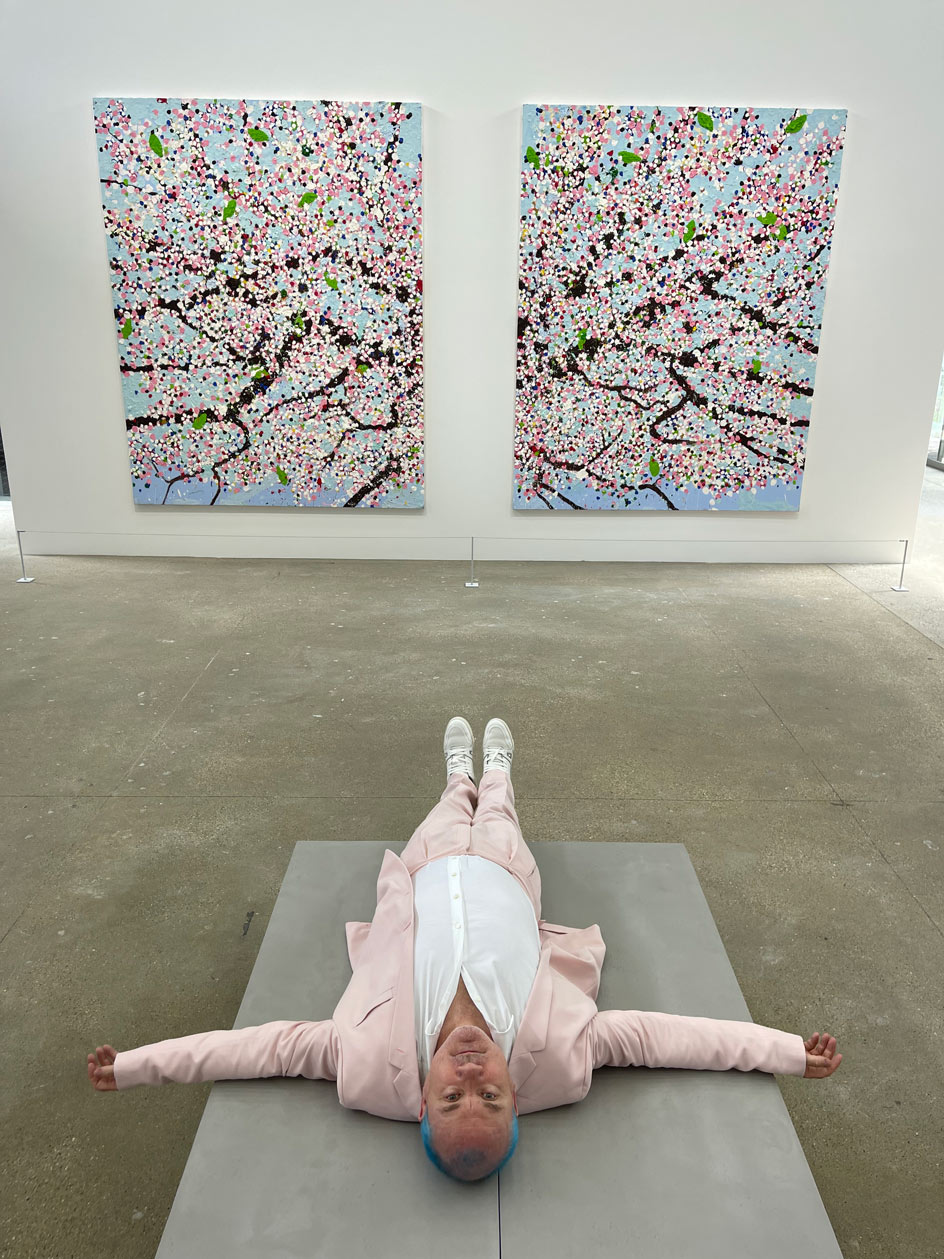
Portrait of Damien Hirst at his ’Cherry Blossoms’ exhibition at Fondation Cartier pour l’art contemporain, Paris
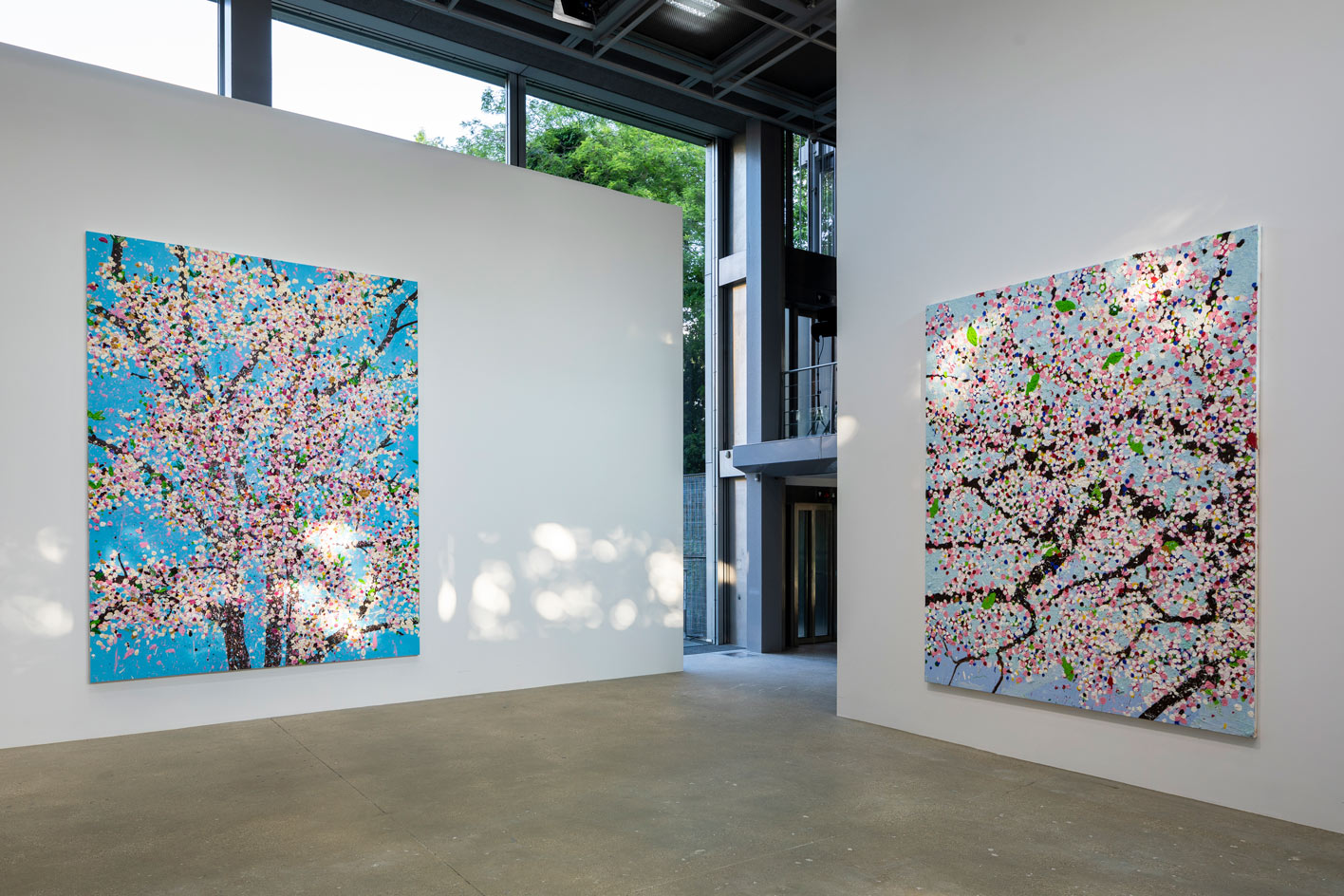
Exhibition view, Damien Hirst, ’Cherry Blossoms’, Fondation Cartier pour l’art contemporain, Paris.
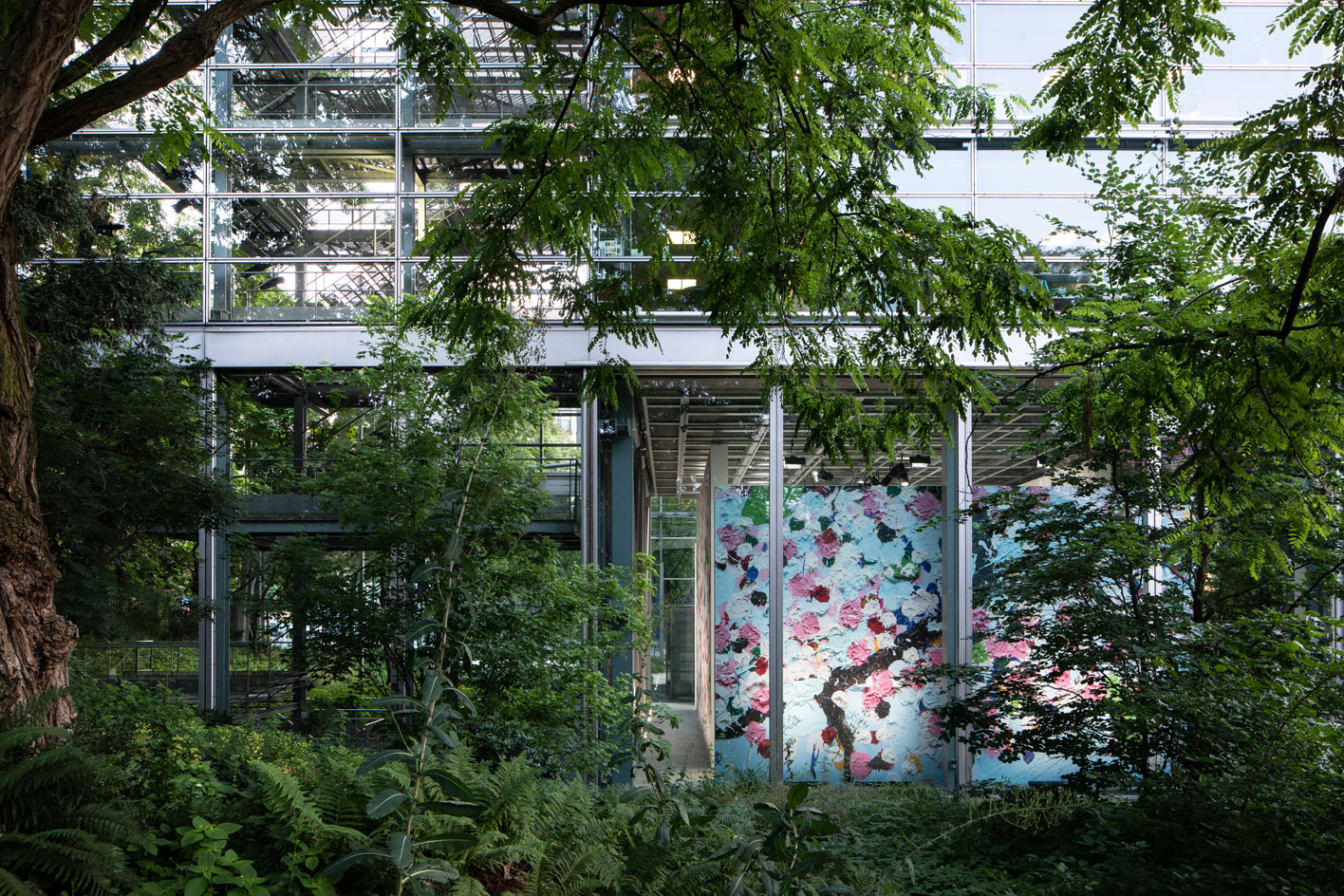
Exhibition view, Damien Hirst, ’Cherry Blossoms’, Fondation Cartier pour l’art contemporain, Paris.
INFORMATION
Damien Hirst, ’Cherry Blossoms’, until 23 May 2022, The National Art Center, Tokyo. nact.jp
Receive our daily digest of inspiration, escapism and design stories from around the world direct to your inbox.
ADDRESS
261 Boulevard Raspail
75014 Paris
Harriet Lloyd-Smith was the Arts Editor of Wallpaper*, responsible for the art pages across digital and print, including profiles, exhibition reviews, and contemporary art collaborations. She started at Wallpaper* in 2017 and has written for leading contemporary art publications, auction houses and arts charities, and lectured on review writing and art journalism. When she’s not writing about art, she’s making her own.
-
 At last: a London hotel that’s great for groups and extended stays
At last: a London hotel that’s great for groups and extended staysThe July London Victoria, a new aparthotel concept just steps away from one of the city's busiest rail stations, is perfect for weekends and long-term visits alike
-
 Three new smartwatches showcase new frontiers in affordable timepiece design
Three new smartwatches showcase new frontiers in affordable timepiece designLong may you run: smartwatches from Withit, Kospet and OnePlus favour function and value above all else, demonstrating just how much the smartwatch has evolved in recent years
-
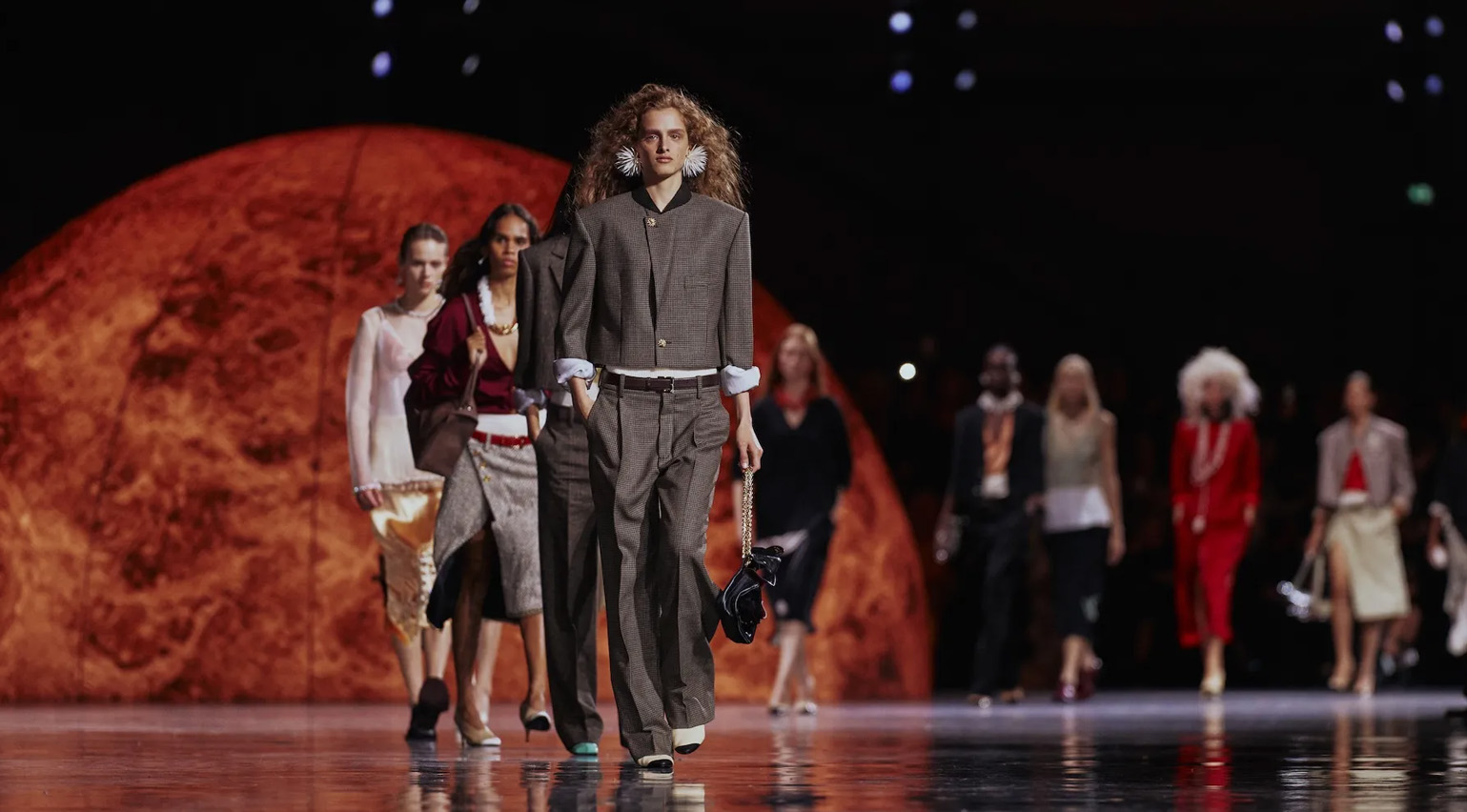 Debuts, dandies, Demi Moore: 25 fashion moments that defined 2025 in style
Debuts, dandies, Demi Moore: 25 fashion moments that defined 2025 in style2025 was a watershed year in fashion. As selected by the Wallpaper* style team, here are the 25 moments that defined the zeitgeist
-
 Rolex Datejust 41 imbues watch history with a modern twist
Rolex Datejust 41 imbues watch history with a modern twistRolex’s iconic Datejust has been updated with a new geometric golden dial that is perfectly in sync with the original wristwatch’s signature fluted bezel
-
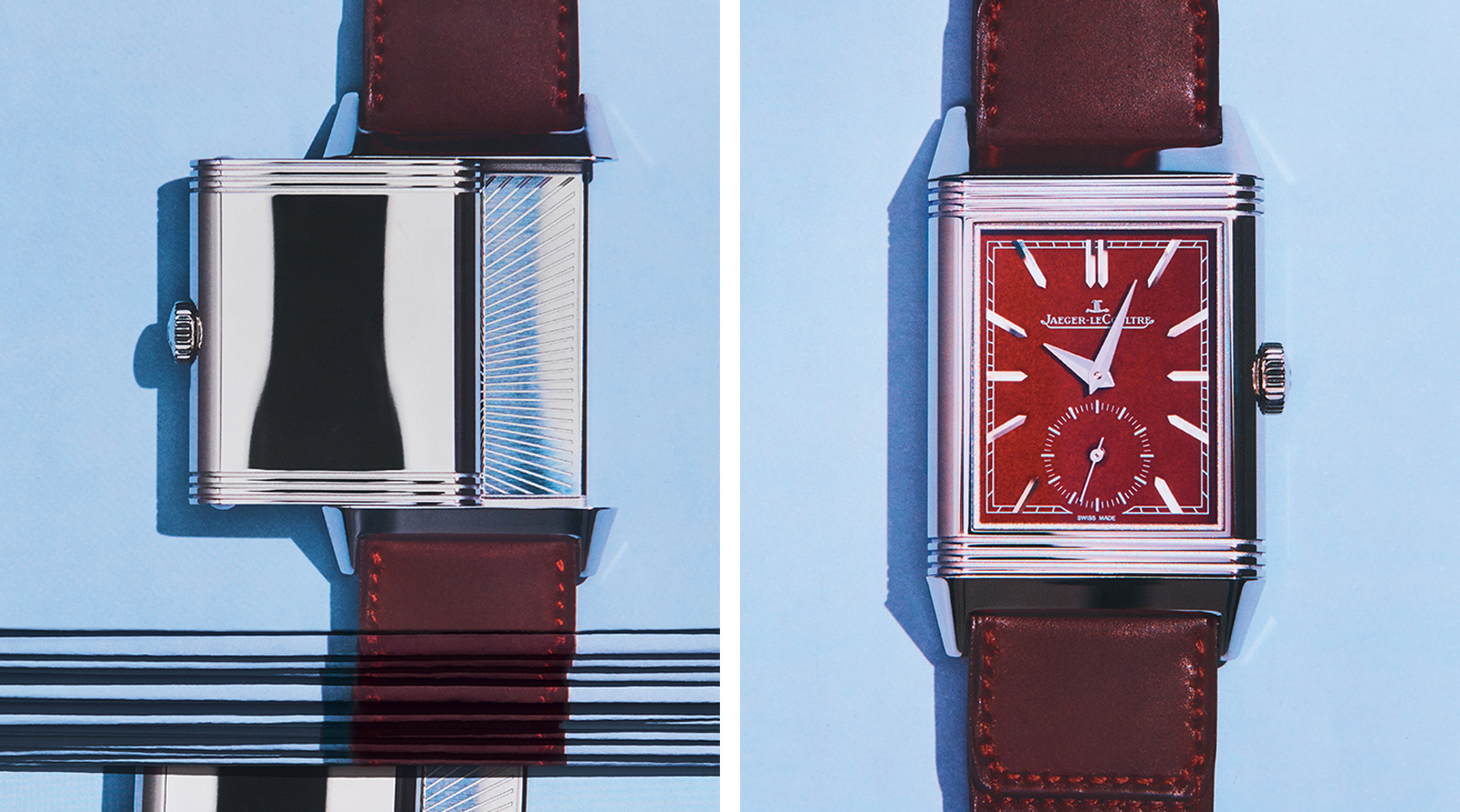 Time regained: revisiting the Jaeger-LeCoultre Reverso
Time regained: revisiting the Jaeger-LeCoultre Reverso